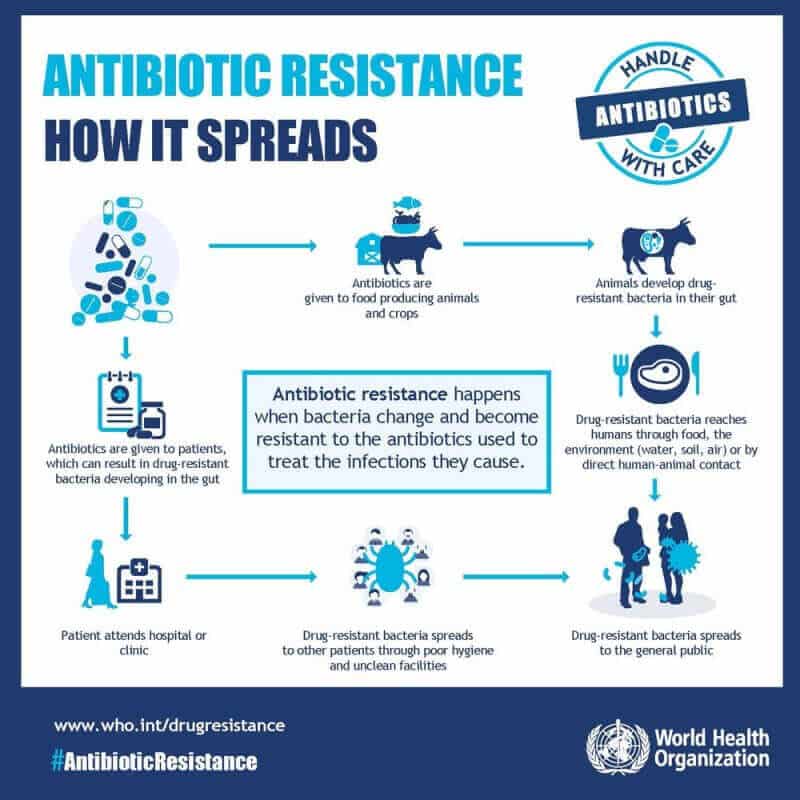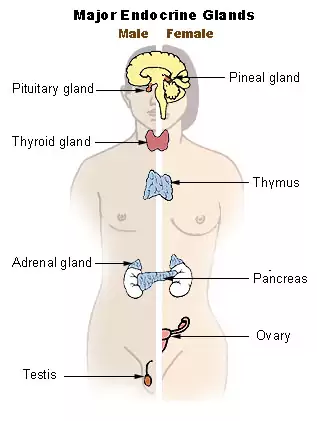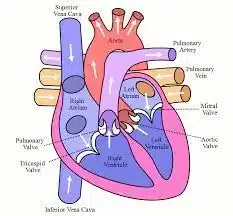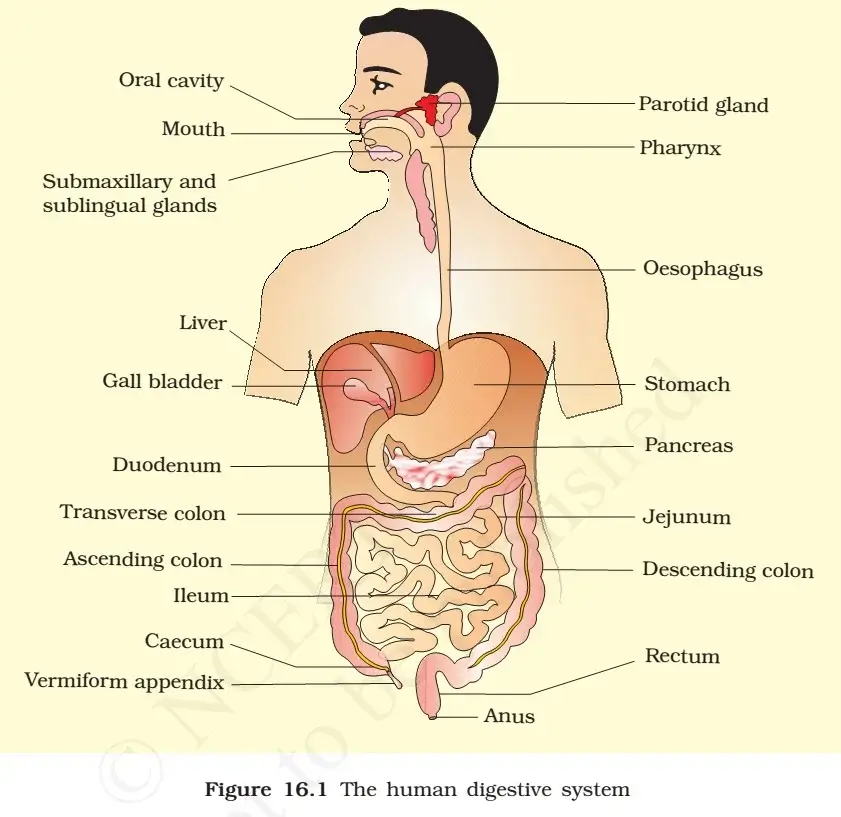What are antimicrobials?
Antimicrobials – including antibiotics, antivirals, antifungals and antiparasitics – are medicines used to prevent and treat infections in humans, animals and plants.
What is antimicrobial resistance?
Antimicrobial Resistance (AMR) occurs when bacteria, viruses, fungi and parasites change over time and no longer respond to medicines making infections harder to treat and increasing the risk of disease spread, severe illness and death.
As a result of drug resistance, antibiotics and other antimicrobial medicines become ineffective and infections become increasingly difficult or impossible to treat.
Reasons for Anti-Microbial Resistance
The main reasons for the antimicrobial resistance are as follows:
- The natural resistance in certain types of bacteria.
- The genetic mutation.
- By one species acquiring resistance from another.
- Resistance can appear spontaneously because of random mutations, or by more commonly following gradual buildup over time, and because of misuse of antibiotics or antimicrobials.
- The resistance is generally slow to reverse or is irreversible. This urges that the interventions to stop the development of resistance should be implemented early before resistance becomes a problem.
Why is antimicrobial resistance a global concern?
- The emergence and spread of drug-resistant pathogens that have acquired new resistance mechanisms, leading to antimicrobial resistance, continues to threaten our ability to treat common infections.
- The clinical pipeline of new antimicrobials is dry. In 2019 WHO identified 32 antibiotics in clinical development that address the WHO list of priority pathogens, of which only six were classified as innovative.
- If people do not change the way antibiotics are used now, even the new antibiotics will suffer the same fate as the current ones and become ineffective.
- Furthermore, a lack of access to quality antimicrobials remains a major issue. Antibiotic shortages are affecting countries of all levels of development and especially in health- care systems.
- The cost of AMR to national economies and their health systems is significant as it affects productivity of patients or their caretakers through prolonged hospital stays and the need for more expensive and intensive care.
What are the reasons for the recent increase in the use of antibiotics in India?
The reasons for the sharp increase in antibiotic use are as follows:
- The high disease burden.
- The rising income.
- The easy and the cheap availability of these medicines to the public.
- The uncontrolled sales of antibiotics.
- Poor public health infrastructure.
- Lack of awareness regarding the misuse of antibiotics.
International Conference on Antimicrobial Resistance
India presided over the 68th session of the World Health assembly proceedings in Geneva (May 18-26, 2015) which adopted a Global Action Plan on AMR to prepare a blueprint with specific actions and timelines for WHO as well as member states to address the growing threat of Antimicrobial Resistance (AMR).
What are the main aims of this International Conference on Antimicrobial Resistance?
The main aims of this conference are:
- To work towards combating antimicrobial Resistance (AMR) globally.
- To create an awareness on the rational use of drugs and antibiotics among the patients, pharmacists, and doctors.
Being one of the world’s largest consumer of antibiotics, the Indian Ministry of Health and Family Welfare, in association with the World Health Organization (WHO) Regional Office for South Asia, had conducted an International Conference on Antimicrobial Resistance. JP Nadda (Union Health Minister) launched the logo “Use with Care” for antibiotics at this International Conference.
The Indian health minister also used the platform to launch the media campaign of ‘Medicine strips with Red Line’ which may help to create mass awareness against the misuse of antibiotics.
What is a Red Line campaign?
- The Union health ministry’s Anti-Microbial Resistance awareness campaign urges people not to use medicines marked with a red vertical line, including antibiotics, without a doctor’s prescription.
- These medicines are called as the ‘Medicines with the Red Line’.
- To check the irrational use of antibiotics, the ‘red line’ will helps the users to differentiate them from other drugs.
- This campaign is aimed at discouraging unnecessary prescription and over-the-counter sale of antibiotics causing drug resistance for several critical diseases including TB, malaria, urinary tract infection and even HIV.
What are the strategies of WHO’s Global Action Plan on Anti-Microbial Resistance?
- To improve awareness and understanding of antimicrobial resistance through effective communication, education, and training.
- To strengthen the knowledge and evidence base through surveillance and research.
- To reduce the incidence of infection through effective sanitation, hygiene and infection prevention measures.
- To optimize the use of antimicrobial medicines in human and animal health.
- To develop the economic case for sustainable investment that takes account of the needs of all countries and to increase investment in new medicines, diagnostic tools, vaccines and other interventions.
National Action Plan on Antimicrobial Resistance
India released the AMR action plan in 2017, 2 years after the Global Action Plan was released by WHO. Only 2 states Kerala and Madhya Pradesh have State Action Plan.
Goal
- To effectively combat antimicrobial resistance in India.
3 Objectives of NAP-AMR
- Define the timeline and allocate the budget to slow the emergence of AMR in India and to strengthen the coordination between various organizations.
- Strengthen the surveillance, optimize the use of antibiotics in all sectors enhanced investments in AMR activities, research, and innovations.
- Monitor and evaluate the NAP-AMR implementations.
5 Strategic Priorities of NAP-AMR
- Improve awareness and understanding of AMR through effective communication, training, and education.
- Strengthen knowledge and evidence through surveillance
- Reduce the incidence of infection through effective infection prevention and control.
- Optimize the use of antimicrobial agents in health, animals, and food.
- Promote investments for AMR activities, research, and innovations.
- Strengthen India’s leadership on AMR.
Source : WHO









